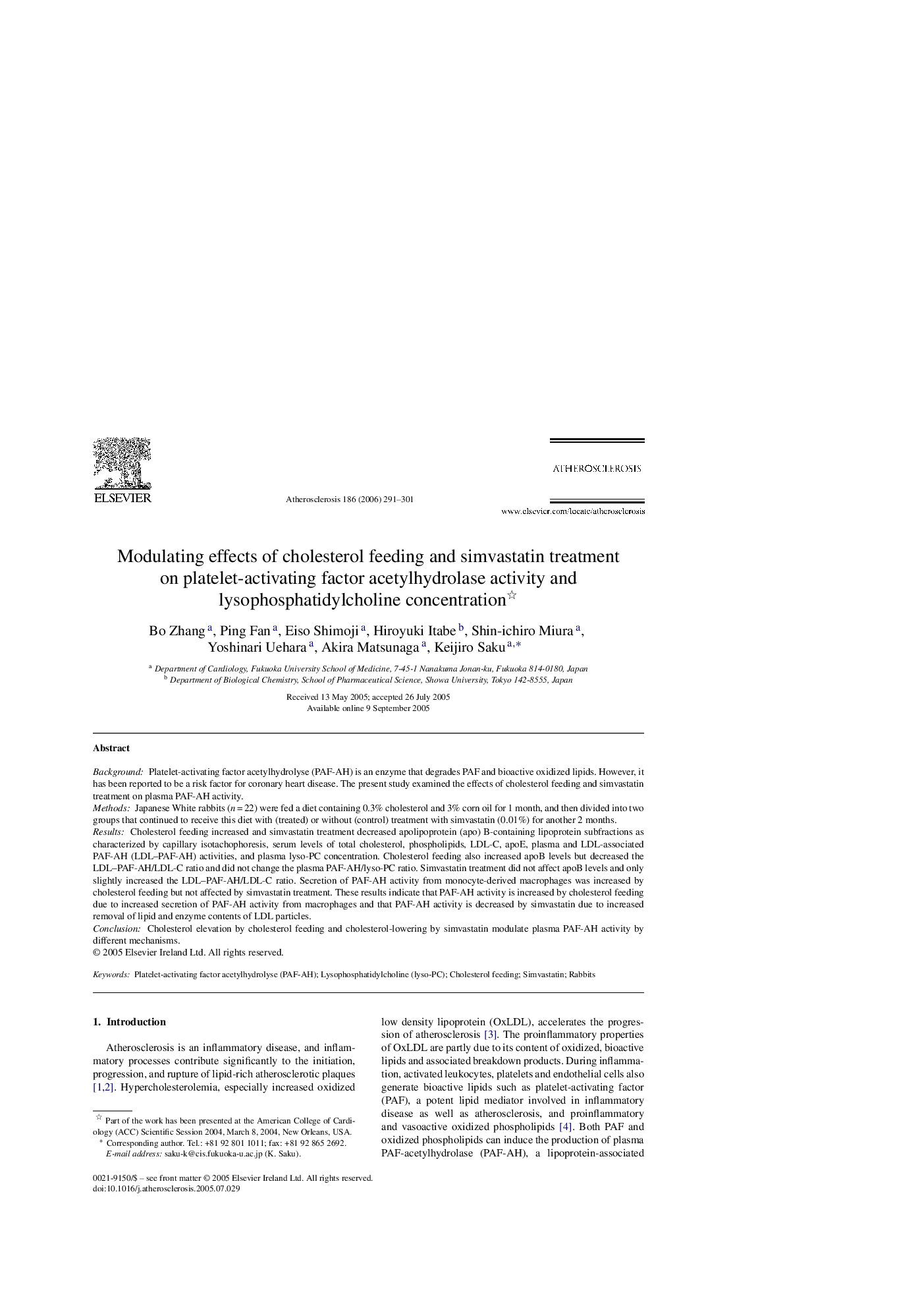| Article ID | Journal | Published Year | Pages | File Type |
|---|---|---|---|---|
| 2895253 | Atherosclerosis | 2006 | 11 Pages |
BackgroundPlatelet-activating factor acetylhydrolyse (PAF-AH) is an enzyme that degrades PAF and bioactive oxidized lipids. However, it has been reported to be a risk factor for coronary heart disease. The present study examined the effects of cholesterol feeding and simvastatin treatment on plasma PAF-AH activity.MethodsJapanese White rabbits (n = 22) were fed a diet containing 0.3% cholesterol and 3% corn oil for 1 month, and then divided into two groups that continued to receive this diet with (treated) or without (control) treatment with simvastatin (0.01%) for another 2 months.ResultsCholesterol feeding increased and simvastatin treatment decreased apolipoprotein (apo) B-containing lipoprotein subfractions as characterized by capillary isotachophoresis, serum levels of total cholesterol, phospholipids, LDL-C, apoE, plasma and LDL-associated PAF-AH (LDL–PAF-AH) activities, and plasma lyso-PC concentration. Cholesterol feeding also increased apoB levels but decreased the LDL–PAF-AH/LDL-C ratio and did not change the plasma PAF-AH/lyso-PC ratio. Simvastatin treatment did not affect apoB levels and only slightly increased the LDL–PAF-AH/LDL-C ratio. Secretion of PAF-AH activity from monocyte-derived macrophages was increased by cholesterol feeding but not affected by simvastatin treatment. These results indicate that PAF-AH activity is increased by cholesterol feeding due to increased secretion of PAF-AH activity from macrophages and that PAF-AH activity is decreased by simvastatin due to increased removal of lipid and enzyme contents of LDL particles.ConclusionCholesterol elevation by cholesterol feeding and cholesterol-lowering by simvastatin modulate plasma PAF-AH activity by different mechanisms.
